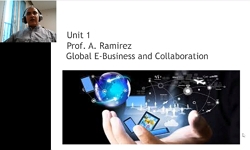- CONTENTS
- List of Figures = xv
- Preface = xvii
- Acknowledgments = xix
- 1 ORGANIZATION IN HUMAN ENDEAVORS = 1
다국어 입력
あ
ぁ
か
が
さ
ざ
た
だ
な
は
ば
ぱ
ま
や
ゃ
ら
わ
ゎ
ん
い
ぃ
き
ぎ
し
じ
ち
ぢ
に
ひ
び
ぴ
み
り
う
ぅ
く
ぐ
す
ず
つ
づ
っ
ぬ
ふ
ぶ
ぷ
む
ゆ
ゅ
る
え
ぇ
け
げ
せ
ぜ
て
で
ね
へ
べ
ぺ
め
れ
お
ぉ
こ
ご
そ
ぞ
と
ど
の
ほ
ぼ
ぽ
も
よ
ょ
ろ
を
ア
ァ
カ
サ
ザ
タ
ダ
ナ
ハ
バ
パ
マ
ヤ
ャ
ラ
ワ
ヮ
ン
イ
ィ
キ
ギ
シ
ジ
チ
ヂ
ニ
ヒ
ビ
ピ
ミ
リ
ウ
ゥ
ク
グ
ス
ズ
ツ
ヅ
ッ
ヌ
フ
ブ
プ
ム
ユ
ュ
ル
エ
ェ
ケ
ゲ
セ
ゼ
テ
デ
ヘ
ベ
ペ
メ
レ
オ
ォ
コ
ゴ
ソ
ゾ
ト
ド
ノ
ホ
ボ
ポ
モ
ヨ
ョ
ロ
ヲ
―
http://chineseinput.net/에서 pinyin(병음)방식으로 중국어를 변환할 수 있습니다.
변환된 중국어를 복사하여 사용하시면 됩니다.
예시)
- 中文 을 입력하시려면 zhongwen을 입력하시고 space를누르시면됩니다.
- 北京 을 입력하시려면 beijing을 입력하시고 space를 누르시면 됩니다.
А
Б
В
Г
Д
Е
Ё
Ж
З
И
Й
К
Л
М
Н
О
П
Р
С
Т
У
Ф
Х
Ц
Ч
Ш
Щ
Ъ
Ы
Ь
Э
Ю
Я
а
б
в
г
д
е
ё
ж
з
и
й
к
л
м
н
о
п
р
с
т
у
ф
х
ц
ч
ш
щ
ъ
ы
ь
э
ю
я
′
″
℃
Å
¢
£
¥
¤
℉
‰
$
%
F
₩
㎕
㎖
㎗
ℓ
㎘
㏄
㎣
㎤
㎥
㎦
㎙
㎚
㎛
㎜
㎝
㎞
㎟
㎠
㎡
㎢
㏊
㎍
㎎
㎏
㏏
㎈
㎉
㏈
㎧
㎨
㎰
㎱
㎲
㎳
㎴
㎵
㎶
㎷
㎸
㎹
㎀
㎁
㎂
㎃
㎄
㎺
㎻
㎽
㎾
㎿
㎐
㎑
㎒
㎓
㎔
Ω
㏀
㏁
㎊
㎋
㎌
㏖
㏅
㎭
㎮
㎯
㏛
㎩
㎪
㎫
㎬
㏝
㏐
㏓
㏃
㏉
㏜
㏆
https://www.riss.kr/link?id=M7226535
- 저자
-
발행사항
Englewood : Libraries Unlimited, 1999
-
발행연도
1999
-
작성언어
영어
- 주제어
-
DDC
020 판사항(21)
-
ISBN
1563084937
-
자료형태
단행본(다권본)
-
발행국(도시)
Colorado
-
서명/저자사항
The organization of information / Arlene G. Taylor.
-
형태사항
xx, 280 p.
-
총서사항
Library and information science text series
-
일반주기명
Includes bibliographical references and index.
- 소장기관
-
0
상세조회 -
0
다운로드
부가정보
목차 (Table of Contents)
- CONTENTS
- List of Figures = xv
- Preface = xvii
- Acknowledgments = xix
- 1 ORGANIZATION IN HUMAN ENDEAVORS = 1
- Is There a Basic Human Need to Organize? = 1
- Why Do We Need to Organize? = 2
- Why Do We Need to Organize Information? = 2
- What Is Organization of Recorded Information? = 2
- How Is the Organization of Information Approached in Different Environments? = 6
- Libraries = 6
- Archives = 8
- Museums and Art Galleries = 9
- The Internet = 11
- Data Administration and Office Environments = 13
- Conclusion = 14
- Notes = 14
- Suggested Readings = 15
- Organization of Information in Libraries = 15
- Organization of Information in Archives/Manuscripts = 15
- Organization of Information in Museums/Art Galleries = 15
- Organization of Information in the Internet = 15
- Organization of Information in Data Administration = 16
- Offices = 16
- Data Modeling = 16
- 2 Retrieval Tools = 17
- Why Do We Need Retrieval Tools? = 17
- What Are the Basic Retrieval Tools, Their Formats, and Their Functions? = 18
- Bibliographies = 18
- Catalogs = 20
- Purposes of Catalogs = 21
- Forms of Catalogs = 23
- Arrangements Within Catalogs = 25
- Indexes = 27
- Finding Aids = 29
- Registers = 31
- Databases = 31
- Bibliographic Utilities = 31
- Conclusion = 33
- Notes = 33
- Suggested Readings = 34
- 3 Development of the Organization of Recorded Information In Western Civilization = 37
- Inventories, Bibliographies, Catalogs, and Codification = 37
- Antiquity = 37
- Middle Ages = 37
- European Renaissance = 40
- From Inventories to Collocating Devices = 41
- Period of Codification = 43
- Twentieth Century = 45
- Description = 45
- Subject Access = 46
- Verbal Subject Access = 46
- Classification = 47
- Special Materials = 48
- Archives = 48
- Museums and Art Galleries = 49
- Subject Access to Special Materials = 49
- Mechanization of Bibliography = 50
- The Documentation Movement = 50
- Library Automation = 52
- Conclusion = 52
- Notes = 53
- Suggested Readings = 54
- 4 Encoding Standards = 57
- How Do We Encode Records? = 57
- Why Do We Encode Records? = 58
- What Are Examples of Standards for Coding Records That Are Currently in Use? = 58
- MARC (MAchine Readable Cataloging) = 59
- USMARC = 63
- UNIMARC = 64
- SGML (Standard Generalized Markup Language) = 65
- DTD (Document Type Definition) = 65
- XML (Extensible Markup Language) = 73
- Warwick Framework = 73
- Conclusion = 74
- Notes = 74
- Suggested Readings = 75
- 5 Metadata : Description = 77
- What Is a Bibliographic/Surrogate/Metadata Record? = 78
- How Are Surrogate Records Created? = 78
- ISBD (International Standard Bibliographic Description) = 80
- Anglo-American Cataloguing Rules, Second Edition 1988 revision (AACR2r) = 82
- Archival APPM (Archives, Personal Papers, and Manuscripts) Records = 85
- TEI (Text Encoding Initiative) Headers = 86
- The Dublin Core = 87
- GILS (Government Information Locator Service) Records = 89
- FGDC (Federal Geographic Data Committee) Content Standard for Digital Geospatial Metadata = 93
- VRA (Visual Resources Association) Core Categories for Visual Resources = 93
- EAD (Encoded Archival Description) = 94
- Crosswalks = 95
- Index Records = 95
- On-the-Fly Records = 95
- Museum Accession Records = 97
- How Does the Environment Affect the Way a Surrogate Record Is Created? = 97
- Conclusion = 97
- Notes = 98
- Suggested Readings = 99
- 6 Metadata : Access and Access Control = 103
- Choice of Access Points = 104
- Primary Access Point = 104
- Main Entry Controversy = 106
- Justification for Main Entry = 107
- AACR2 Principles for Choosing Main Entry = 114
- Additional Access Points = 117
- Access (Authority) Control = 117
- Headings for Access Points = 119
- Principles for Choice of Personal Name = 120
- Principles for Form of Personal Name = 121
- Principles for Entry Word and Remaining Structure of Personal Name = 122
- Principles for Choice of Corporate Name = 123
- Principles for Entry Word and Form of Heading for Corporate Names = 124
- Principles for Choice of Uniform Title = 125
- Principles for Arrangement of Uniform Titles = 125
- International Access (Authority) Control = 126
- Conclusion = 128
- Notes = 128
- Suggested Readings = 129
- 7 Verbal Subject Analysis = 131
- Subject Analysis Process = 132
- Exhaustivity = 135
- identification of Concepts = 137
- Topics Used As Subject Concepts = 137
- Names Used As Subject Concepts = 140
- Chronological Elements As Subject Concepts = 141
- The Concept of Form As Subject = 142
- Translating Concepts into Index Terms = 143
- Controlled Vocabulary = 143
- Controlled Vocabulary Problems = 144
- Specific vs. General = 145
- Synonymous Concepts = 145
- Word Form for One-word Terms = 145
- Sequence and Form for Multiword Terms and Phrases = 146
- Homographs and Homophones = 147
- Qualification of Terms = 147
- Abbreviations and Acronyms = 148
- Popular vs. Technical = 148
- Subdivision of Terms = 148
- Precoordination vs. Postcoordination = 149
- General Principles for Applying Controlled Vocabulary Terms = 149
- Literary Warrant = 149
- Specific Entry = 150
- Direct Entry = 150
- Number of Terms Assigned = 151
- Concept Not in Controlled Vocabulary = 151
- Index Terms for Names = 151
- Kinds of Controlled Vocabularies = 151
- Subject Heading Lists = 152
- Thesauri = 156
- Natural Language Processing (NLP) = 158
- Ontologies = 160
- Keywords = 163
- WordNet = 164
- Conclusion = 166
- Notes = 167
- Suggested Readings = 169
- LCSH = 170
- Sears = 170
- MESH = 170
- AAT = 171
- ERIC = 171
- NLP and Ontologies = 171
- 8 Classification = 173
- Classification Theory = 174
- Classical Theory of Categories = 174
- Prototype Theory = 176
- Hierarchical, Enumerative, and Faceted Classifications = 176
- Classification Schemes = 181
- Classification Concepts = 181
- Broad vs. Close Classification = 182
- Classification of Knowledge vs. Classification of a Particular Collection = 183
- Integrity of Numbers vs. Keeping Pace with Knowledge = 184
- Fixed vs. Relative Location = 185
- Classification Concepts (continued) Closed vs. Open Stacks = 186
- Location Device vs. Collocation Device = 187
- Classification of Serials vs. Alphabetic Order of Serials = 187
- Classification of Monographic Series = 189
- Classification of the Internet = 189
- Artificial Neural Networks (ANNS) = 192
- Conclusion = 194
- Notes = 194
- Suggested Readings = 195
- Classification in General = 195
- Specific Classification Schemes = 196
- Dewey Decimal Classification = 196
- LC Classification = 197
- Universal Decimal Classification = 197
- Colon Classification = 197
- Other = 197
- Classification and the Internet = 198
- Artificial Neural Networks (ANN) = 198
- 9 Arrangement and Display = 199
- Arrangement of Physical Information Packages = 199
- Libraries = 199
- Archives = 201
- Arrangement of Intangible Information Packages = 202
- Arrangement of Surrogates (Metadata) = 203
- Filing History = 203
- General Rules for Arrangement = 204
- Filing/Display Dilemmas = 206
- Conclusion = 208
- Notes = 209
- Suggested Readings = 209
- Arrangement of Information-Bearing Entities = 209
- Libraries = 209
- Archives = 210
- Internet = 210
- Arrangement of Bibliographic/Surrogate Records = 210
- 10 System Design = 211
- How Does System Design Relate to the Organization of Information? = 211
- How Can Existing Systems Be Used and Interpreted Effectively? = 212
- What Suggestions for Improving Current Systems and What New Systems Have Been Proposed for the Organization of Information? = 219
- Standard Interfaces and Z39.50 = 220
- Labels and Brief Displays = 221
- Exploitation of MARC = 222
- Browsing = 222
- Spelling Correction = 223
- Controlled Vocabulary and Classification = 223
- Conclusion = 224
- Notes = 224
- Suggested Readings = 225
- Conclusion = 227
- Notes = 228
- Appendix : Subject Analysis Application = 229
- Glossary = 233
- Index = 255
- �
분석정보
연관 공개강의(KOCW)
-

Management Information Systems
국민대학교 알레한드로라미레즈 -

Neurophysiology and Information
한국과학기술원 Christopher Fiorillo -

Neurophysiology and Information
한국과학기술원 Christopher Fiorillo -

Personal Development and Sharing Information
Teachers TV Teachers TV -

The plant vascular system as an information superhighway control over traits vital to agricultural production
경상국립대학교 루카스 윌리엄









